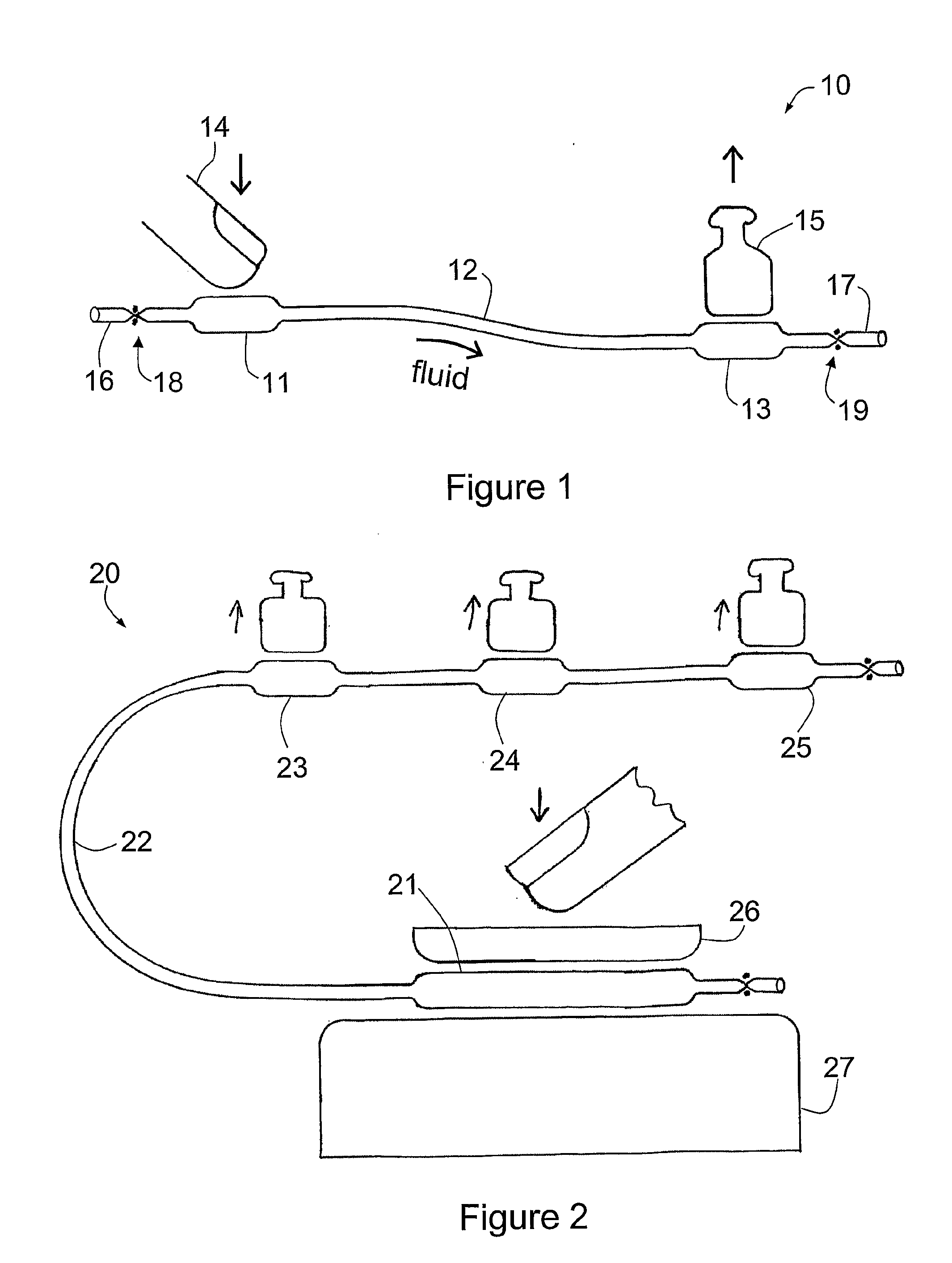Fluid transmission
a transmission device and fluorescence technology, applied in the direction of couplings, dolls, pumping plants, etc., can solve the problems of not being widely used, and being complex, so as to reduce the size of the transmission device and reduce the force or power
- Summary
- Abstract
- Description
- Claims
- Application Information
AI Technical Summary
Benefits of technology
Problems solved by technology
Method used
Image
Examples
example
[0105]Experiments were carried out with standard 2 mm diameter heat shrink. A driven bag of dimensions 2.5 mm×8 mm was used to lift a mass of 2 kg, raising it by over 1 mm.
[0106]A more precise set of experiments was carried out using Zeus Sub-Lite-Wall brand PTFE Heat Shrinkable tubing. (PTFE heat shrink tubing remains highly flexible even when shrunk, and can have an external diameter of as little as ˜125 μm when shrunk, so is particularly advantageous in the embodiments described herein.) A driven bag was formed from this material which had the dimensions 0.9 mm×3.0 mm. The driven bag lifted a mass of 120 g to a height of approximately 0.5 mm. The wall thickness of this tube is given by the manufacturer as 0.051 mm. This means that the stroke of this motion is 5 times the collapsed wall thickness, which is very large compared with other miniature actuators such as piezo elements and the like.
[0107]The driven bag was tested with excess pressure to destruction. The irreversible stre...
PUM
| Property | Measurement | Unit |
|---|---|---|
| diameter | aaaaa | aaaaa |
| diameter | aaaaa | aaaaa |
| mass | aaaaa | aaaaa |
Abstract
Description
Claims
Application Information
 Login to View More
Login to View More - R&D
- Intellectual Property
- Life Sciences
- Materials
- Tech Scout
- Unparalleled Data Quality
- Higher Quality Content
- 60% Fewer Hallucinations
Browse by: Latest US Patents, China's latest patents, Technical Efficacy Thesaurus, Application Domain, Technology Topic, Popular Technical Reports.
© 2025 PatSnap. All rights reserved.Legal|Privacy policy|Modern Slavery Act Transparency Statement|Sitemap|About US| Contact US: help@patsnap.com



